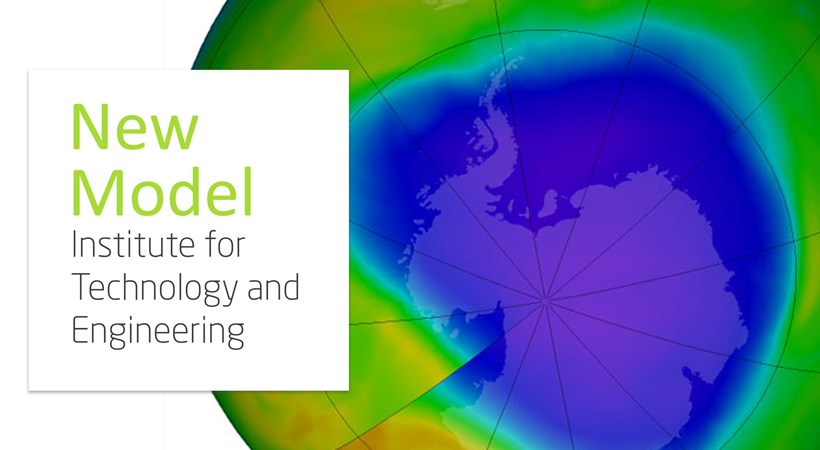It’s International Day for the Preservation of the Ozone Layer and NMITE educator, Helen Rogers (whose passion for atmospheric science is evident through 20 years’ experience as a leading scientist) has given us the facts on why we all need to care a little more about the ozone layer and what can be achieved if we demonstrate real change, now.
‘The ozone layer is located between 16 and 48 km above the Earth’s surface, with ozone contributing less than 0.0015% of the molecules found there. So why care when the ozone is so far up and there is so little of it anyway…? Well, ozone at these altitudes provides a natural barrier to high-energy ultraviolet (UV) light that can cause cancer and damage the DNA of living things. In fact, together ozone and oxygen typically absorb over 95% of the harmful UV that would otherwise reach the Earth’s ecosystem.
In 1976, when British scientists in Antarctica measured record low levels of ozone at high altitudes, it came as a surprise. Of-course seasonal changes do occur naturally to the ozone layer and many scientists originally attributed these low values to just such variability. However, over the coming years, the thinning of the ozone layer (referred to, incorrectly, as a ‘hole’) kept on appearing in the polar regions regularly each Spring – there had to be a reason!
By 1985 scientists were finally and confidently able to attribute these changes to human activity through the release of chlorofluorocarbons (CFCs). These CFCs were at the time widely used for a variety of purposes, including air cooling systems and aerosol spray cans, without any known environmental impact.
In an unprecedented international response, the Montreal Protocol (signed in 1987 by more than 70 countries) set goals to reduce CFC production. This act demonstrated the need and capability to respond to scientific evidence and tackle global-scale environmental issues internationally. It is a credit therefore to those involved that, although these pollutants will take decades still to be removed fully from our atmosphere, the ozone ‘hole’ is recovering.
Of course, natural seasonal changes to the ozone layer still occur, in fact this Spring saw a rare ozone ‘hole’ in the Northern Hemisphere. However, the swift, decisive international response shown in 1987, and subsequent amendments, demonstrates just what can be achieved when we all decide to act. With that in mind just imagine what we could collectively accomplish in combating global challenges such as climate change, poverty, coronavirus, cruelty and inequality if we all chose to make a stand.’
Find out more about International Day for the Preservation of the Ozone Layer.







